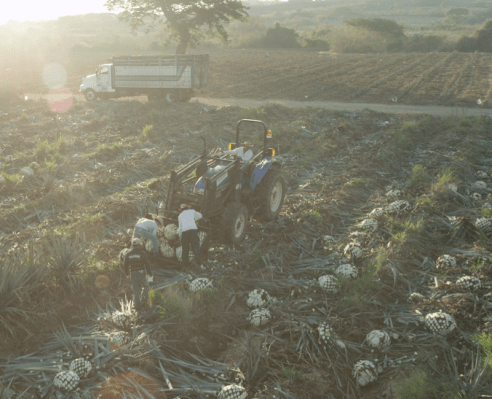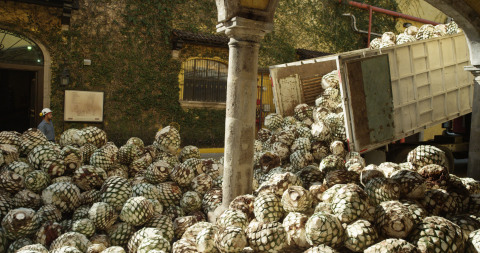A tequila brand and car company joining forces isn’t exactly a marriage made in marketing heaven. So what brought Ford and Jose Cuervo together?
On Tuesday, the two companies announced a partnership to explore how the tequila distributor’s leftover agave plant fibers can be used to produce more sustainable bioplastic parts in the automaker’s vehicles. Currently, Ford and Jose Cuervo are testing the agave-derived bioplastics for parts including wiring harnesses, HVAC units and storage bins.
Initial feedback from this pilot stage shows that agave has strong durability and aesthetic qualities for the aforementioned interior and exterior parts. If the plant winds up being used on Ford’s cars permanently, it could further reduce vehicles’ weight and lower energy consumption across its lineup.
And there won’t be a shortage, as Jose Cuervo harvests between 200 and 300 tons of agave daily.
“They’re shredding, mashing and extracting the juice and what’s left over that nobody knows what to do with? The fibers,” Debbie Mielewski, Ford’s senior technical leader of the sustainability research department, told me. “They sent us some treated fibers and we were able to chop it and compound it into plastic.”
Agave use continues Ford’s evolution of the greening of its plastics through use of “environmental, plant-based materials” wherever possible, Mielewski said. Back in 2008, Ford used soy foam as a replacement for petroleum oil in the seat cushions and headrests of its iconic Mustang. Today, Ford has soy foam in seat cushions and headrests in every single vehicle across its lineup in North America. Mielewski says Ford utilizes over five million pounds of soy oil annually.
That served as a lesson to keep looking for even ‘greener’ plant-based materials. Ford pinpointed wheat straw to fortify plastic bins of its Flex SUV, which is built in the city of Oakville in Canada.
If this pilot stage with agave is fruitful, the plant fibers could join soy foam, wheat straw, castor oil, kenaf fiber, cellulose, wood, coconut fiber and rice hulls; the eight sustainable-based materials used for car parts by the automaker today.
And Mielewski says the company is “looking at plants that grow very quickly,” citing algae and bamboo to be used for greener plastic parts as well. Ford is even working with carbon dioxide itself.
“Instead of releasing it into the atmosphere and greenhouse gas, you can build polymer molecules out of it,” she says. “We have made good foam — not in production yet — but 50 percent carbon dioxide. So, wouldn’t it be beautiful if one day, instead of releasing CO2, we could use it to make various plastics on the car?”
Ford says there’s 400 pounds of plastic on a typical vehicle, so there are plenty of parts remaining that can incorporate materials from sustainable sources like agave.

